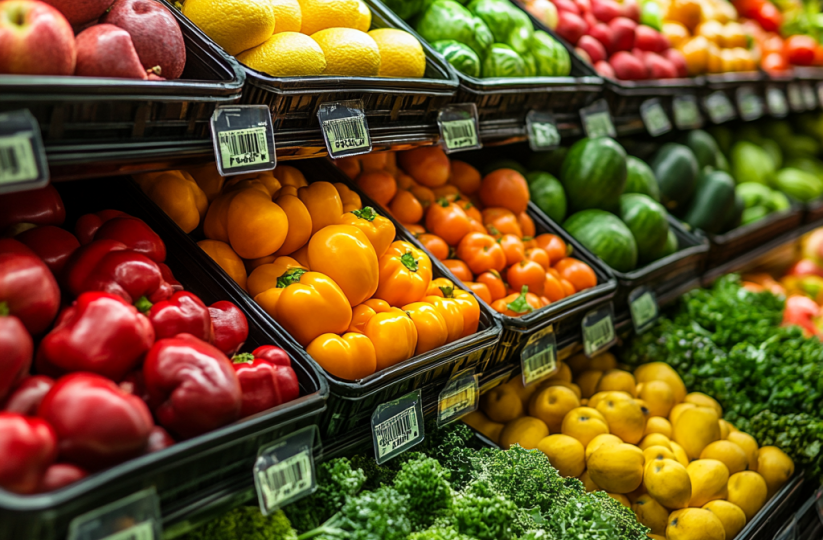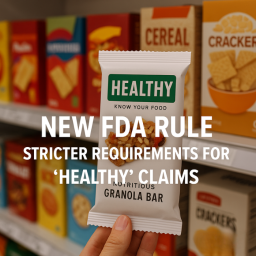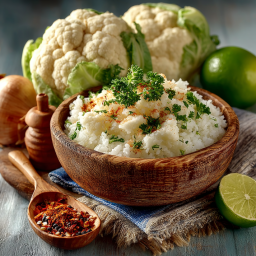
When perusing the produce aisles, you might notice small stickers adorning fruits and vegetables. These stickers, known as Price Look-Up (PLU) codes, serve as more than just tools for cashiers; they offer consumers insights into the cultivation methods of their produce. Understanding these codes can empower you to make informed decisions aligned with your health preferences and ethical considerations.
Deciphering PLU Codes:
- Four-Digit Codes (Starting with 3 or 4): A standard four-digit PLU code, such as 4011 for bananas, indicates that the produce was conventionally grown using traditional farming methods, which may include the application of synthetic pesticides and fertilizers.
- Five-Digit Codes Beginning with 9: When a PLU code consists of five digits starting with the number 9 (e.g., 94011 for organic bananas), it signifies that the item was organically grown. This means the produce was cultivated without synthetic pesticides, fertilizers, or genetically modified organisms (GMOs).
- Five-Digit Codes Beginning with 8: Historically, a five-digit code starting with 8 was designated to identify genetically modified produce. However, this practice has not been widely adopted, and such labeling is rare in the marketplace. Consequently, genetically modified produce is often labeled with the same four-digit codes as conventionally grown items, making it challenging for consumers to distinguish between the two based solely on PLU codes.
The Role and Origin of PLU Codes:
Introduced in 1990, PLU codes are standardized by the International Federation for Produce Standards (IFPS). They facilitate inventory management and accurate pricing at checkout by providing a consistent system to identify produce items based on attributes such as commodity type, variety, and growing methodology.
Legal Framework Governing Produce Labeling:
In the United States, food labeling is primarily regulated by the Food and Drug Administration (FDA) and the United States Department of Agriculture (USDA). The Fair Packaging and Labeling Act (FPLA) mandates that consumer commodities, including food items, bear labels with the following information:
- Identity of the Product: Clearly stating what the product is.
- Name and Place of Business: Information about the manufacturer, packer, or distributor.
- Net Quantity of Contents: Indicating the amount of product in the package.
However, it’s important to note that while the FPLA requires these details, the use of PLU codes is not federally mandated but is widely adopted to streamline retail operations.
Environmental Considerations:
While PLU stickers serve functional purposes, they pose environmental concerns. Most are made from non-biodegradable materials, making them unsuitable for composting and contributing to waste. Efforts are underway to develop compostable alternatives, but until such solutions are widely implemented, it’s advisable to remove and properly dispose of these stickers before composting fruit and vegetable scraps.
Implications for Consumers and Legal Considerations:
Understanding PLU codes allows consumers to make choices that align with their health preferences and ethical considerations. However, the voluntary nature of these codes means that they are not a foolproof method for identifying organic or genetically modified produce. For those seeking to avoid GMOs or ensure organic consumption, looking for additional certifications or labels approved by the USDA can provide more assurance.
Conclusion:
The small stickers on your produce carry valuable information about the cultivation methods used. By understanding PLU codes, you can make informed choices that reflect your health priorities and ethical values. However, it’s essential to recognize the limitations of this system and seek additional information when necessary to ensure your food choices align with your preferences.
Q&A Section:
Question 1: Are PLU codes required by law on all produce?
Answer 1: No, the use of PLU codes is voluntary and not mandated by law. While many retailers utilize them for inventory and pricing purposes, not all produce items may carry these labels.
Question 2: Can I determine if produce is genetically modified by looking at the PLU code?
Answer 2: Identifying genetically modified produce solely by PLU codes is challenging. Although a five-digit code beginning with 8 was intended to signify GMOs, this labeling practice is rarely used. Consequently, genetically modified produce often shares the same four-digit codes as conventionally grown items.
Question 3: Do PLU codes provide information about the country of origin?
Answer 3: No, PLU codes do not indicate the country of origin. This information is typically provided separately on the produce label or signage in the store.
Question 4: Are produce stickers compostable?
Answer 4: Most produce stickers are made from non-biodegradable materials and are not suitable for composting. It’s recommended to remove and dispose of them properly before composting fruit and vegetable scraps.
Question 5: How can consumers ensure they are purchasing organic produce?
Answer 5: While a five-digit PLU code starting with 9 indicates organic produce, consumers should also look for the USDA Organic seal or other certified organic labels to ensure the authenticity of organic products.
Question 6: What steps are being taken to make produce stickers more environmentally friendly?
Answer 6: Researchers and manufacturers are exploring compostable and biodegradable materials for produce stickers to reduce environmental impact. However, widespread implementation of such eco-friendly stickers is still in progress.
Final Thoughts
As the food industry continues to evolve, so too must our awareness of the systems behind it. PLU codes are a small but powerful tool for consumers, offering a glimpse into how our fruits and vegetables are grown. However, they are only one part of a much larger labeling ecosystem that includes certifications, regulatory standards, and ongoing debates about transparency in food sourcing and labeling.
For consumers committed to organic, non-GMO, or sustainable eating, PLU codes can serve as a starting point—but not the only reference. Looking for third-party certifications, understanding federal and state food labeling laws, and knowing how retailers and producers apply these codes are all part of making well-informed decisions.
From a legal and compliance standpoint, the use and representation of food labels, including PLU codes, must align with truth-in-labeling principles under federal guidelines such as those from the FDA and USDA. Misleading consumers through improper or deceptive labeling can result in serious legal consequences for brands, including enforcement actions and class action litigation. That’s why food and beverage brands must work closely with a trusted food industry law firm to mitigate risks and protect their brand’s reputation.
At Juris Law Group, P.C. we bring deep expertise in food labeling regulations, compliance issues, and intellectual property protection for CPG brands. Whether you’re launching a new product, navigating organic certification, or defending against a label-based challenge, our team is equipped to guide you every step of the way. If you’re looking for the best lawyer for a CPG brand or an attorney for a food label dispute, we’re here to help. Reach out today to ensure your products meet every legal standard—clearly, accurately, and confidently.















